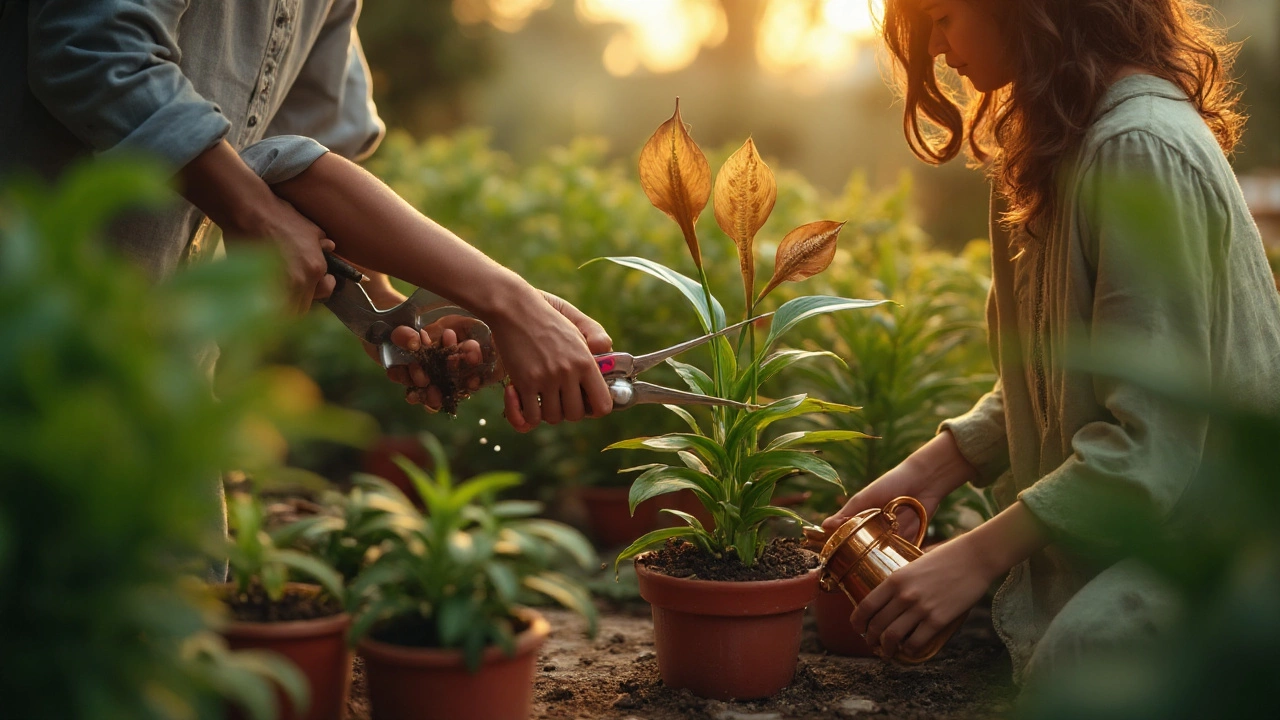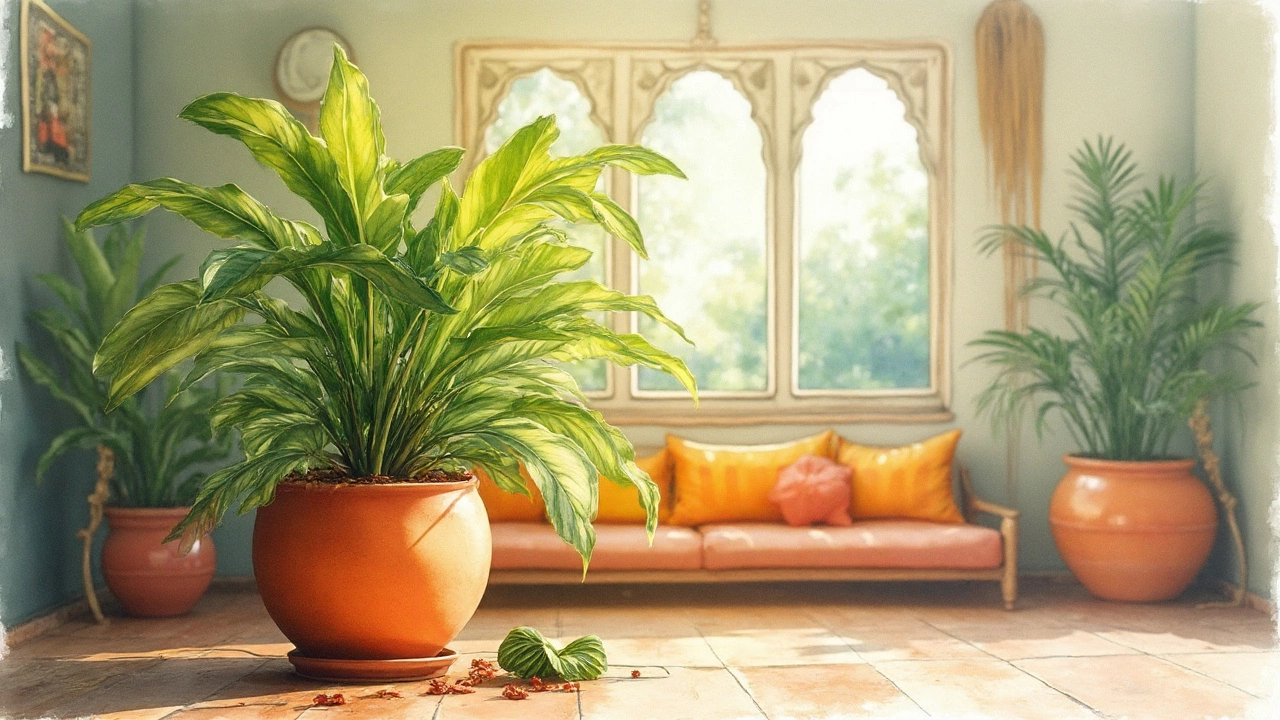Ever watched one of your favorite houseplants droop for days, like a moody teen who’s had enough? There’s nothing quite as disappointing as noticing leaves turning crispy, stems going floppy, or that dreaded yellow hue spreading across your monstera—especially when you were just getting proud of your little indoor jungle. When your plant looks like it’s on its last legs, it feels like you’ve failed, like maybe your thumb’s not so green after all. But here’s a little reality check: nursing a plant back to life is a skill anyone can learn, and it's honestly less about luck and more about patience, observation, and a couple of clever experiments. So if you’re eyeballing a sad fiddle leaf or that pothos you forgot in the loo, hold off on chucking it out. Let’s get into what actually works to revive dying houseplants once they start sending those SOS signals.
Reading Your Plant’s Distress Signals
A plant never wilts for fun—it’s always responding to its environment. Your job is basically plant detective, piecing together clues from discolored leaves, sagging stems, or weird smells. Have you ever noticed that brown, crispy edges never show up in isolation? They’re usually shouting, ‘I’m thirsty!’ Or maybe the leaves yellow and drop off one by one—classic sign of overwatering or lousy drainage. Some stats for you: a 2023 Royal Horticultural Society survey found the top three causes of British houseplant death were overwatering (33%), forgetting to water (25%), and too little light (19%).
First step: compare the symptoms. Blister-like spots? That’s often edema from too much water. Pasty white dust? That’s powdery mildew, needs less moisture and more airflow. Roots poking through the bottom and leaves turning pale? That plant is rootbound—desperate for a bigger pot. Mushy stems are a big red flag: root rot, which needs immediate action. Make a quick table like this when diagnosing:
| Symptom | Likely Problem | Quick Fix |
|---|---|---|
| Yellow leaves | Overwatering, poor drainage | Check soil, let dry, repot if needed |
| Crispy/brown edges | Underwatering, low humidity | Water more, mist leaves |
| Wilting, mushy stems | Root rot | Remove rotting roots, repot |
| White spots/powder | Fungal disease | Increase flow, treat with fungicide |
| No new growth | Lack of nutrients/light | Fertilize, move to brighter spot |
Don’t just look at the leaves—dig your finger into the soil (about 2-3 cm down). If it’s bone dry, it’s deffo thirst. If it's soggy or smells muddy, your roots are having a bad time (and so are you). Plant app images can miss subtleties, so feel the stem, check for pests (like spidery web threads under the leaves), and note where light falls during the day. Sometimes, what you think is an issue is just seasonal—plants will sulk a little in UK winters due to less sunlight, but usually bounce back by spring.

Rescue Steps: Bringing Your Plant Back from the Brink
Once you’ve done your forensics, you can actually start helping. Start simple: prune what’s clearly dead. Take sharp, sterilised scissors (no, don’t use your kitchen ones with toast crumbs on) and snip off brown leaves or soggy stems. This stops rot from spreading and encourages healthy parts to regrow. Never get snip-happy—leave at least half the healthy foliage, or the plant will struggle Photosynthesizing.
Next challenge: sort the roots. If you suspect rot, gently slide the plant from its pot and check for black, mushy roots (unhealthy) versus firm, white or tan roots (healthy). Snip away the mushy bits, then rinse the rest under cold water. Let them dry a bit, then re-pot in fresh, well-draining mix. You can find ‘houseplant rescue mix’ at most shops here in Brighton—anything chunky and full of perlite or bark chunks will help breathe life back into those roots. If your plant’s rootbound (roots circling like spaghetti on the outer edge), tease them out gently before re-potting in a container just 2cm wider—going too big can cause root shock.
Let’s talk watering, because this is where trouble starts for most. A struggling plant doesn’t want to be drowned in hope—only water when the soil feels just slightly damp, never bone dry or swampy. For most houseplants, stick a finger in up to the knuckle: if it feels dry, give it a drink and let excess drain away. Ditch those cachepots with no drainage holes or risk ‘wet feet’ forever. Bottom watering (placing the pot in a tray of water for 20 minutes) can help roots rehydrate evenly without causing rot. Just don’t forget the pot!
Light matters more than people think. In Brighton, cloudy spells can stretch for days and even south-facing rooms might be gloomy in winter. If your plant’s sited miles from a window, move it closer—or try a cheap grow lamp (many cost less than £25). But watch for sunburn if you’re near a hot window. Rotate your plant once a week so every side sees the light, preventing lopsided growth.
Humidity is easy to boost—group plants together, or sit them on a tray of water and pebbles. Some people swear by misting leaves, though to be honest, it only raises humidity for about 30 seconds. A small humidifier really works wonders for tropical plants. If you spot dust, wipe down leaves gently with a damp microfibre cloth to help them breathe.
Feed carefully. A plant on the mend doesn’t need a sudden feast—use diluted liquid fertiliser (half-strength) once a month, but only if there’s active growth and it’s spring or summer. For sickly plants in autumn or winter, let them rest and focus on recovery rather than forcing new leaves.
Watch for pests (fungus gnats, spider mites, scale). Catch these early with a sticky trap or gentle neem oil solution, and isolate the plant from others if needed. Remember, plant pests ride into your house on new purchases or open windows, so keep an eye out all year. After a rescue, give your plant some time—new growth can take weeks, sometimes months. Don’t ditch a plant just because it looks slow or awkward at first!

Routine Habits That Keep Plants Thriving
Nursing a dying plant is actually the fastest way to learn about what makes them tick. Once you’ve revived a few, even tough cases like calatheas or peace lilies, you’ll start to notice patterns and head off trouble before it really starts. The best gardeners don’t wait for disaster—they build habits that keep plants happy daily. Start by keeping a monthly plant check-in: look for signs of stress, rotate the pot, wipe the leaves, and check the soil’s texture. It takes about as long as making your morning tea.
Don’t adopt too many new plants at once. Each plant needs a period to get used to your space, and shuffling them around only adds to the shock. Group similar species together (all your ferns or succulents). This makes care routines easier and helps you tweak the environment—ferns want more humidity, cacti need dry, bright spots. Label your pots with the plant’s name and care reminder: water on Sundays, mist Tuesdays, or whatever works best for your schedule. If you travel, get a neighbour or friend to do the bare minimum: check water and move plants out of direct sunlight if there’s a heatwave.
Here’s where things get fun—make your plant care part of your space. In Brighton, many folks keep their snake plants on the bathroom shelf or drape pothos from kitchen cupboards because those spots naturally give the right conditions with humidity and filtered light. Use storage benches with built-in trays for drainage, or hang wall pots in bright hallways. For plants that need a boost, cheap plug-in hygrometers will keep you honest about humidity and temperature. Plants aren’t just background—they become part of your daily rhythm.
You’d be surprised at how much routine pruning, dusting, and moving can help with everything from pest management to promoting bushier growth. When you cut back leggy stems, you signal the plant to branch out and get stronger. When you dust, you clear the ‘pores’ for better light absorption. With regular habits, you’ll spend less time playing emergency room and more time watching your plants actually thrive.
Want a quick visual for plant wellbeing? Keep a journal or snap monthly photos. You’ll notice tiny improvements—a new shoot here, deeper green leaves there—that remind you even small changes make a difference. Data from Kew Gardens in 2024 suggested that home gardeners who checked their plants at least once a week had 25% better survival rates during heatwaves, compared to those who “left them to it”. A little love, consistently, keeps your indoor garden lush and lively, no matter what the weather decides to do outside.



